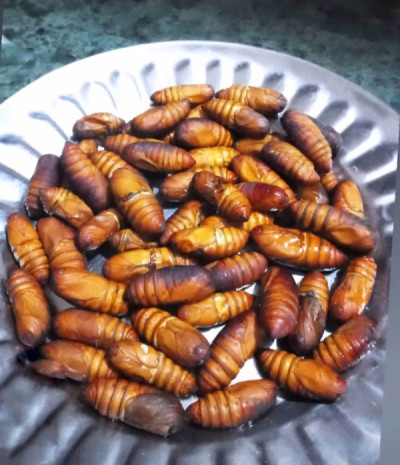Is Muga Leta (silkworm) Eaten As A Traditional Dish In Assam?



Yes, Muga Leta, or silkworm dish, is a traditional and culturally significant recipe in Assam, particularly among indigenous communities like the Bodo and Mishing. It's a popular delicacy, often stir-fried, curried, or made into chutneys, and is known for its high protein content and unique flavor.
Eaten mainly in tribal and ethnic households, Muga Leta is valued for its high protein content, vitamins, and minerals. The silkworms are usually collected after the silk is harvested, then cleaned and cooked in various ways. Popular preparation methods include stir-frying with onions, garlic, and green chilies, or slow-cooking with herbs and spices for a richer flavor.
Muga Leta dishes are considered an acquired taste and are often linked to traditional knowledge of sustainable food practices. In some rural areas, they are also believed to offer health benefits such as boosting energy and improving immunity.
While not a mainstream food across all Assamese households, the Muga Leta dish remains a unique example of how Assamese cuisine embraces diversity — blending culture, tradition, and nature into the dining table.